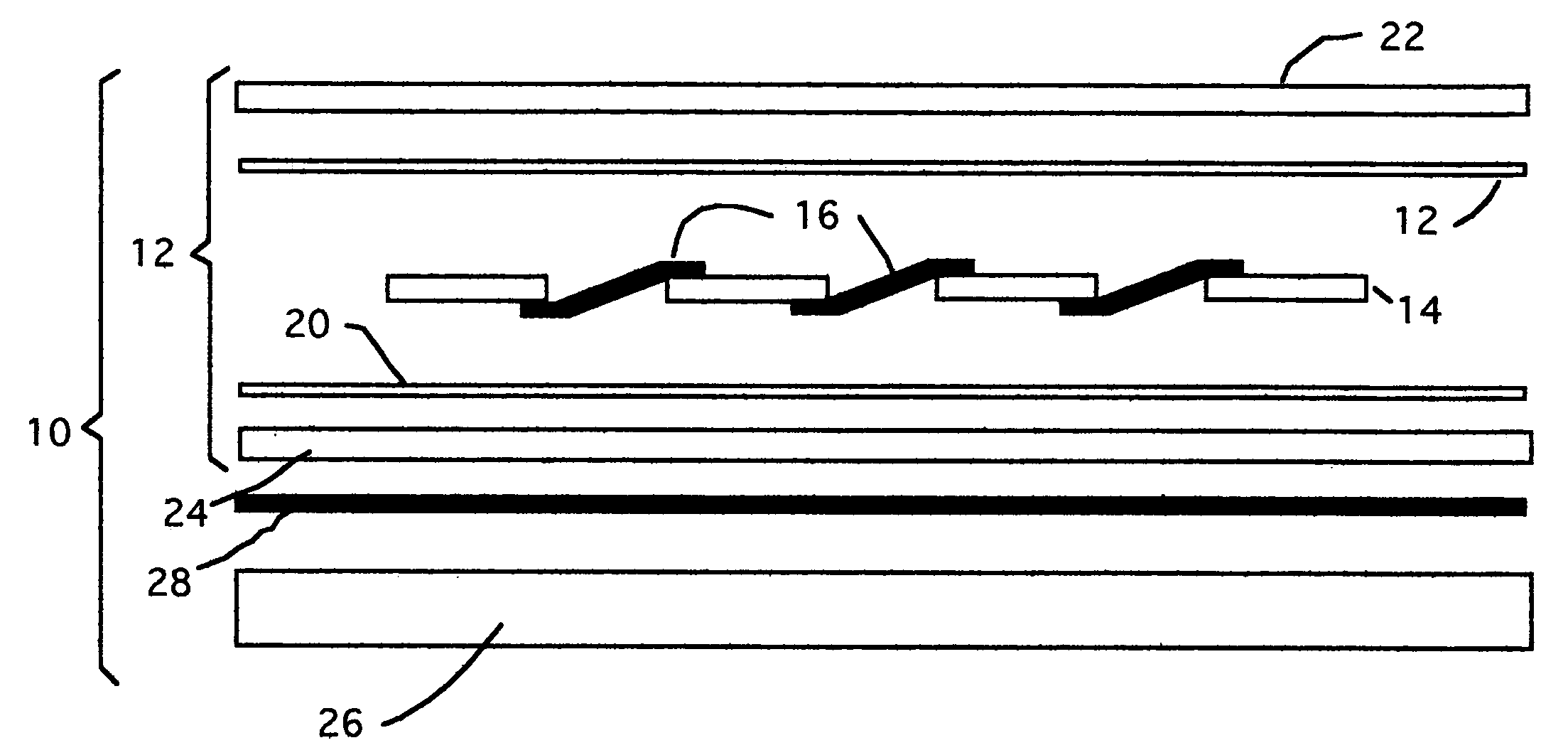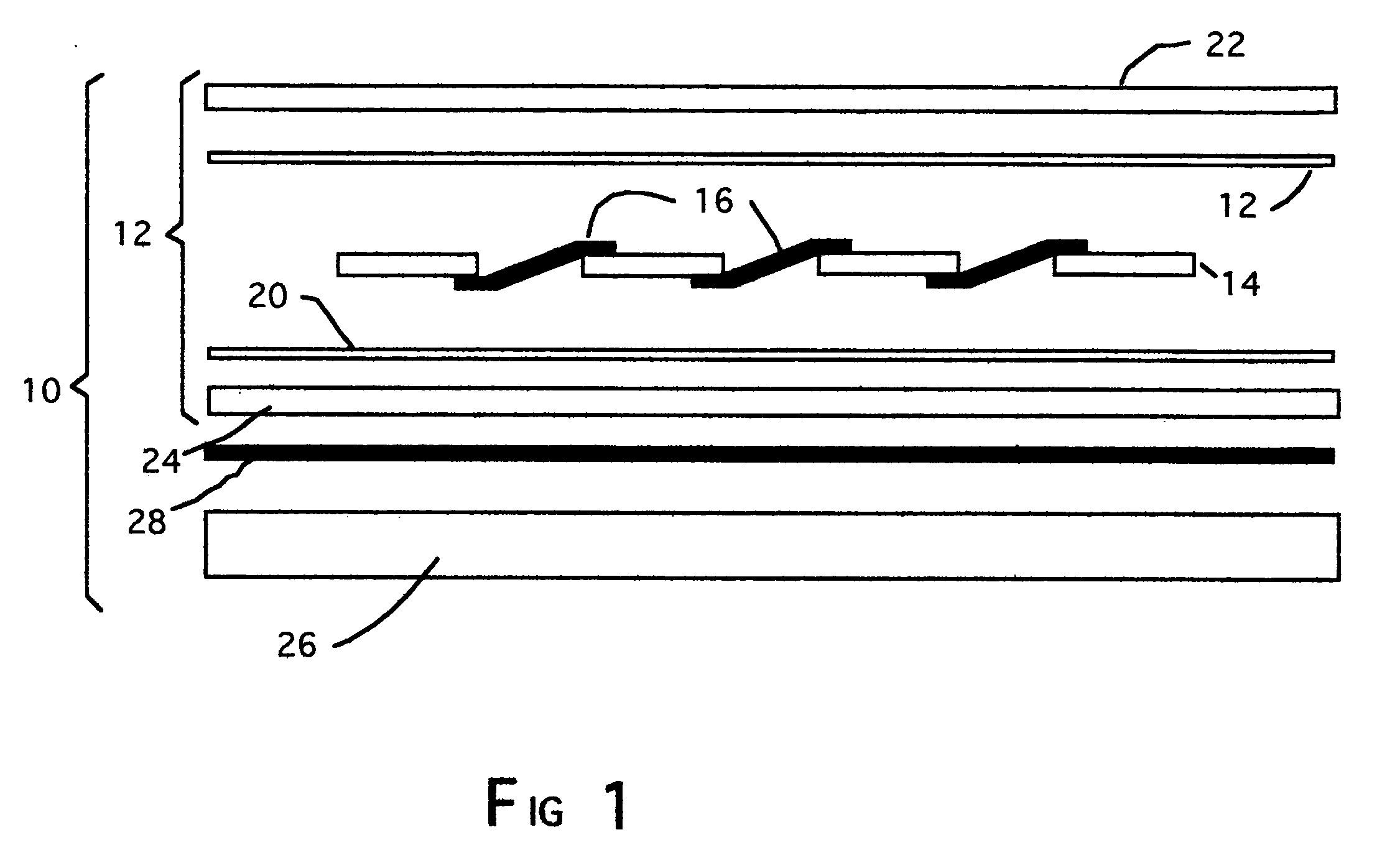Enhanced photovoltaic module
a photovoltaic module and photovoltaic technology, applied in the direction of photovoltaics, electrical devices, semiconductor devices, etc., can solve the problems of high cost, heavy tempered glass, and many inherent problems in the use of glass plates, and achieve economics in manufacture and installation.
- Summary
- Abstract
- Description
- Claims
- Application Information
AI Technical Summary
Benefits of technology
Problems solved by technology
Method used
Image
Examples
Embodiment Construction
[0015] As shown in FIG. 1, a photovoltaic module, generally indicated by the reference numeral 10 and devised in accordance with the present invention, includes a photovoltaic element 12 having a photovoltaic device comprising a plurality of solar cells 12, each of which may be a monocrystalline cell, multicrystalline cell, amorphorus silicone photovoltaic cell, or a compound semiconductor photovoltaic cell. The preferred solar cells in the present invention are of the multicrystalline type since it is of the least cost, and is able to sustain a longer period in which to generate electricity. The solar cells 14 are connected by suitable electrical conductors 16 which, are connected to a central electrical network, not forming a part of the invention. The cells are encapsulated within the element by a set of layers 18, 20, to be described herewith. The first or upper layer 18 is adhesively arranged on the surfaces of the solar cells which directly receive sunlight for producing elect...
PUM
 Login to View More
Login to View More Abstract
Description
Claims
Application Information
 Login to View More
Login to View More - R&D
- Intellectual Property
- Life Sciences
- Materials
- Tech Scout
- Unparalleled Data Quality
- Higher Quality Content
- 60% Fewer Hallucinations
Browse by: Latest US Patents, China's latest patents, Technical Efficacy Thesaurus, Application Domain, Technology Topic, Popular Technical Reports.
© 2025 PatSnap. All rights reserved.Legal|Privacy policy|Modern Slavery Act Transparency Statement|Sitemap|About US| Contact US: help@patsnap.com



